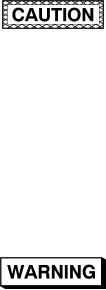
TM 1-1510-262-10
SECTION VII. ENVIRONMENTAL RESTRICTIONS
5-31. ALTITUDE LIMITATIONS.
The maximum altitude that the aircraft may be operated at is 35,000 feet. When operating with inoperative yaw dam
the altitude limit is 17,000 feet.
5-32. TEMPERATURE LIMITS.
a. The aircraft shall not be operated when the ambient temperatures are warmer than ISA +37C at sea level to
25,000 feet, or ISA +31C above 25,000 feet.
b. The ice vanes shall be extended for operations in ambient temperatures of 5 C or below when light free of
visible moisture cannot be assured.
c. Minimum free air temperature for operation of deicing boots shall be -40 C.
If an aircraft is sitting in the sun and the outside temperature reaches 55 C (131F), the cabin tem-
perature could reach 82 C (180F). Under these conditions, measures must be taken to lower the
cabin temperature or damage could result.
d. Many components of the RC-12 Primary Mission Equipment (PME) are classiied as Commercial Off The
Shelf (COTS). The maximum storage limit of COTS equipment is 65 C (149F).
5-33. FLIGHT UNDER INSTRUMENT METEOROLOGICAL CONDITIONS (IMC).
This aircraft is qualiied for operation in instrument meteorological conditions. Refer to the FW PMO / DES ap-
proved Required Equipment List (REL) for installed equipment conditions and restrictions to operate the aircraft
under IMC/IFR. The provisions and requirements of AR 95-1 apply.
While in icing conditions, if there is an unexplained 30% increase of torque needed to maintain air-
speed in level light, a cumulative total of two or more inches of ice accumulation on the wing, an
unexplained decrease of 15 knots IAS, or an unexplained deviation between pilot s and copilot s air-
speed indicators, the icing environment should be exited as soon as practicable. Ice accumulation
on the pitot tube assemblies could cause complete loss of airspeed indication.
5-34. TYPICAL ICING LIMITATIONS.
The following conditions indicate a possible accumulation of ice on the pitot tube assemblies and unprotected aircraft
surfaces. If any of these conditions are observed, the icing environment should be exited as soon as practicable.
a. Total ice accumulation of two inches or more on the wing surfaces. Determination of ice thickness can be
accomplished by summing the estimated ice thicknesses on the wing prior to each pneumatic boot deice cycle (i.e.
four cycles of minimum recommended 1/2-inch accumulation).
b. A 30 percent increase in torque per engine required to maintain a desired airspeed in level light (not to
exceed 85 percent torque) when operating at recommended holding speed.
c. A decrease in indicated airspeed of 15 knots after entering the icing condition (not slower than 1.4 times
power off stall speed) if maintaining original power setting in level light. This can be determined by comparing
pre-icing condition entry speed to the indicated speed after a surface and antenna deice cycles completed.
d. Any variations, from normal indicated airspeed, between the pilot and copilot airspeed tapes.

